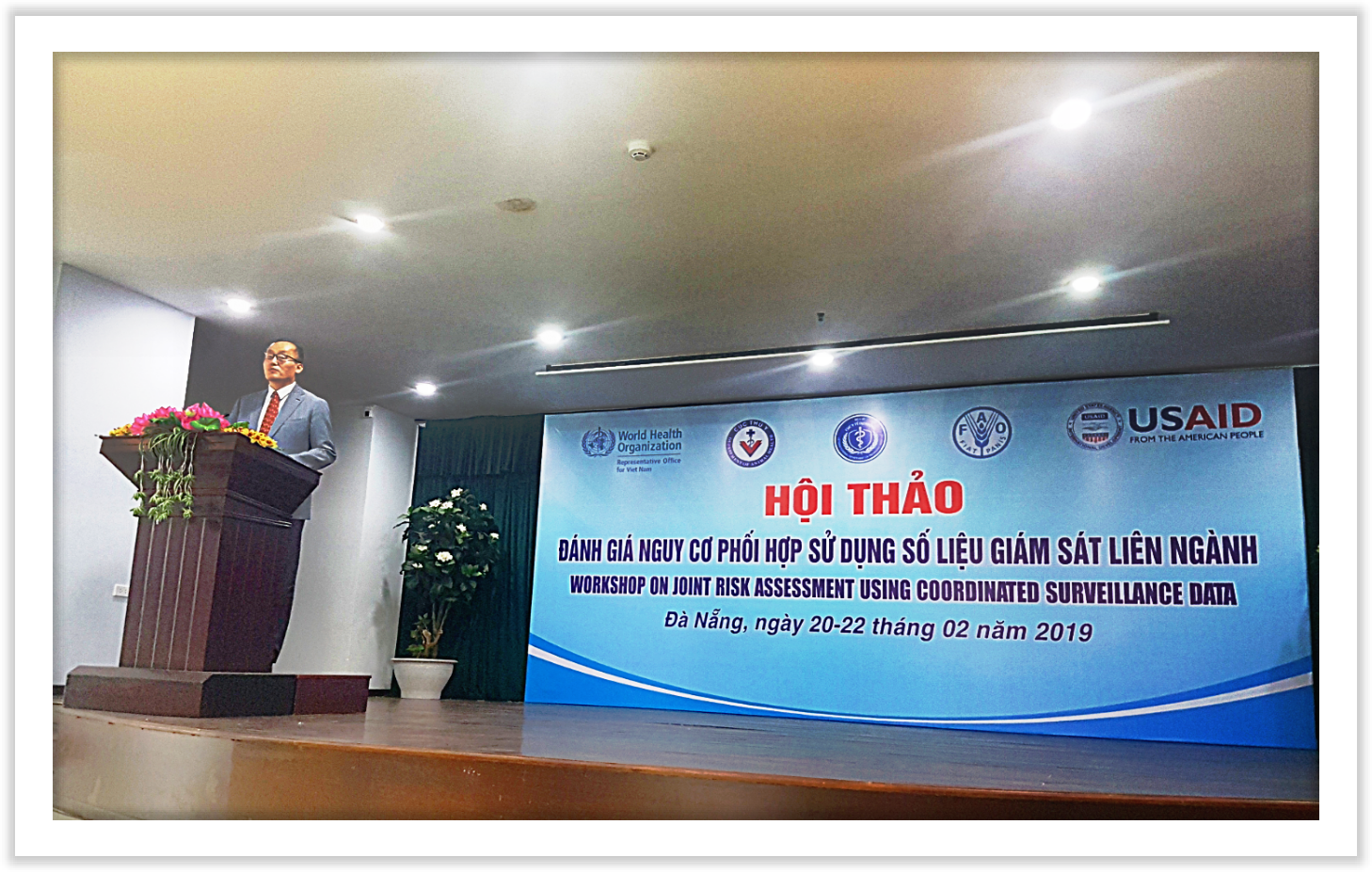I am delighted to be here this morning with you in this important workshop.
I understand that you have been working actively in past 2 days to go through joint risk assessment using the results from the coordinated surveillance project on influenza and other respiratory pathogens (also known as Longitudinal Influenza Surveillance System or LISN) that you have implemented from 2016-2018.
I am also happy to see your close, existing inter-sectoral working collaboration to review and discuss together the health risk among human, animal, and wildlife sectors.
Sixteen (16) years ago, on 12 March 2003, the World Health Organization issued a global alert about a new infectious disease of unknown origin in both Viet Nam and Hong Kong. This was the official beginning of the 2003 global outbreak of severe acute respiratory syndrome (2003) which resulted in about 800 deaths and more than 8,000 confirmed cases from 37 countries.
First warning signal of this global outbreak came from Hanoi, Viet Nam. On Wednesday 26 February, the French Hospital of Hanoi received a pneumonia patient, a Chinese-American businessman. Clinical manifestation of this patient was something unusual. This case was informed to a WHO staff in charge of communicable disease.
On that weekend, he discussed this case with Ministry of Health. They concluded that something new is happening and took actions to control further spread of disease while monitoring the manifestation of disease very carefully.
Unfortunately, the disease did not stop there. Several doctors and nurses in the hospital were infected. The WHO staff was also infected and later died.
However, he was able to report the emergence of new disease to WHO HQ and international society with quite detailed information. His name was Carlos Urbani.

Here, I would say the importance of surveillance, risk assessment and control action: early notification of unusual pneumonia case from the hospital though this case was not designated legally notifiable disease; swift review of the case by expert though information was limited; and prompt and bold action by the government. These actions saved many lives of this country and the world.
However, I have to say we could do better.
When WHO issued the first global alert in early March 2003, the disease was already spread into many countries. Scientist traced back cases of this outbrea. They identified a family gathering in February 2003 at Metropole Hotel in Hong Kong as the epi-center. They traced further and identified a disease outbreak at a hospital in Guangzhou in later January 2003. They traced further and found a community outbreak of disease in November 2002 in a village near Guangzhou. They traced further and learned the virus jumped into human from animal at some point in earlier than November 2002.
We missed several opportunities to detect, assess risks and take actions to avert this global epidemic at early stage.
Still, we are hearing similar stories with similar lesson of global disease outbreak or pandemic - each time different diseases and different location. It was H1N1 influenza pandemic in Mexico in 2009. It was Ebola outbreaks in West Africa in 2014. It was MERS outbreak in Korea in 2015.
I would say common lessons from these multiple stories are the importance of surveillance, risk assessment and bold action at early stage.
Another important common lesson is the importance of animal – human interface of new emerging diseases, coordinated surveillance and joint risk assessment between animal and human health side.
With this, I appreciate your time and enthusiasm in applying the tripartite Joint Risk Assessment tool that was newly developed jointly by FAO, OIE and WHO.
We hope this tool is useful for Viet Nam to further build up your risk assessment, adding on to the current well established surveillance system in Viet Nam.
As this JRA tool is still being piloted, your feedback on its usefulness and application would be valuable for the tripartite secretariat to further improve and finalize it in the near future.
I hope the results from this JRA workshop using last three years efforts of coordinated surveillance, would inform a sustainable and feasible coordinated surveillance system in Viet Nam.
I would like to recognize the great collaboration of all international partners, including FAO, USAID, US CDC, WCS and international partners in these efforts.
Finally, I would like to take this opportunity to thank you GDPM and DAH for organizing this workshop. Thank you for your active participation from all the participants.
I wish you a successful workshop!
Thank you very much.
